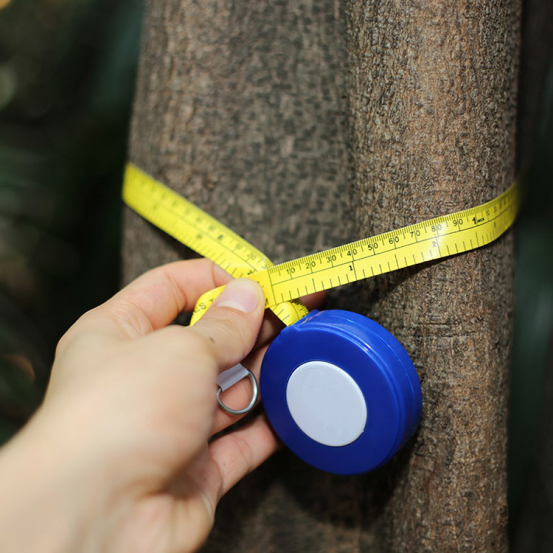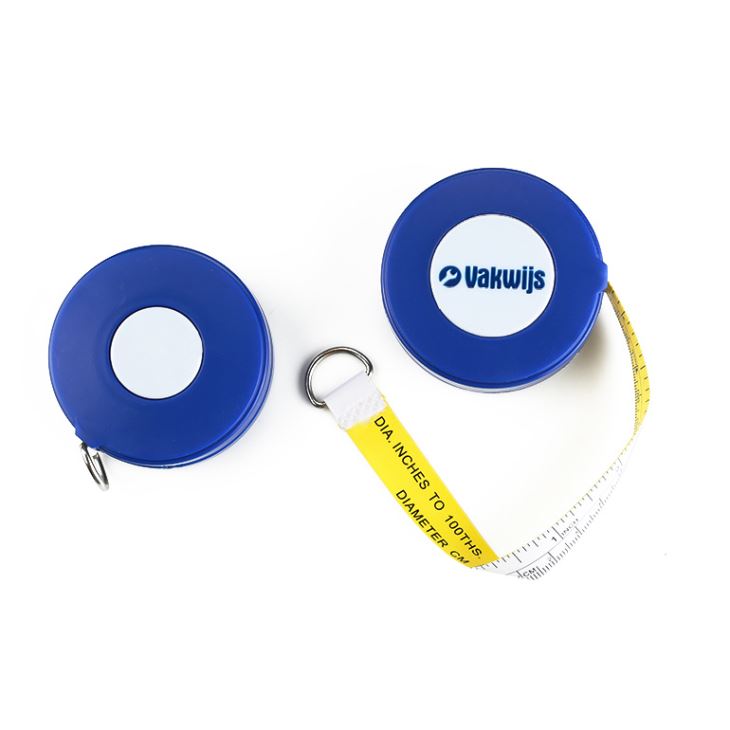How Diameter Tape Measure Is Born
The tape measure that is usually seen on our daily life could be tailor tape measure, body measurement tape, BMI calculator, etc. But one family of measuring tape that many people outside of work for specific industries have never heard of is the diameter-circumference tape, or pi tape.
For centuries, foresters have needed a quick way to estimate the amount of lumber that a given tree will yield. Since girth of a tree is the best determinant of a tree’s lumber yield, the tree’s diameter quickly became the main number of interest and the main input to mathematical equations in the forestry industry. Of course, for lumberjacks out working in the sometimes remote wilderness, it wasn’t ideal to first measure the circumference of a tree, then get out their pencil and paper to divide by pi arrive at the circumference calculation. And thus, the pi tape was born.
Typically pi tapes have standard measurements on one side for measuring circumferences of cylindrical objects, and on the other side they show the diameter measurements (standard measurements divided by pi). They do this in case anyone wants to take standard measurements or circumference measurements— hence the reason pi tapes are often called diameter-circumference tapes.

Pi tapes are used in a variety of industries. In an addition to forestry, we sell diameter tapes to customers measuring plumbing pipes, HVAC ducts, tires, body parts (often times head circumference in infants), agriculture (for measuring livestock girth), and even to shipyards to measure the girths of very large ocean vessels.
Of course, in different industries, there are different accuracy requirements. As you might suspect, no tree is perfectly cylindrical. Most trees have swelling at their bases as the tree trunk transitions into roots. And of course, they narrow at the top as the trunk sends out its branches. Tree diameter measurements are therefore quite inexact. But typically this is not a problem when you’re trying to estimate lumber yield or track the growth of a tree for conservation purposes— a degree of uncertainty is figured into the math. Foresters have tried to standardize the measurement process across tree samples and varieties using a Standard Diameter Height (SDH). The SDH is the height at which the diameter measurement should be taken, which is generally accepted to be 4.5 feet (1.4m) above the ground.
In other industries, such as pipe-fitting, industrial engineering, or medical environments, measurements have to be very exact. For these uses, pi tapes can be calibrated for accuracy using temperature-controlled inspections and even sometimes have laser-engraved graduations. Some tapes are even designed to take inside diameter measurements (as opposed to more standard outside diameter measurements), where you need to calculate the diameter of a softer material that will fit on the outside of another cylindrical object (such as an O-ring needing to fit on the outside of a grooved pipe). And to get to very high levels of accuracy, some pi tapes even employ something called the Vernier Scale, which is the same mathematical concept used to construct calipers that measure very small increments. The next time you need to measure a tree, or column, or pipe, save yourself the headache of doing the math yourself and instead grab a diameter tape like our RT-144 (picture below) which will automatically do the math for you!
The next time you need to measure a tree, or column, or pipe, save yourself the headache of doing the math yourself and instead grab a diameter tape like our RT-144 (picture below) which will automatically do the math for you!




Leave a comment